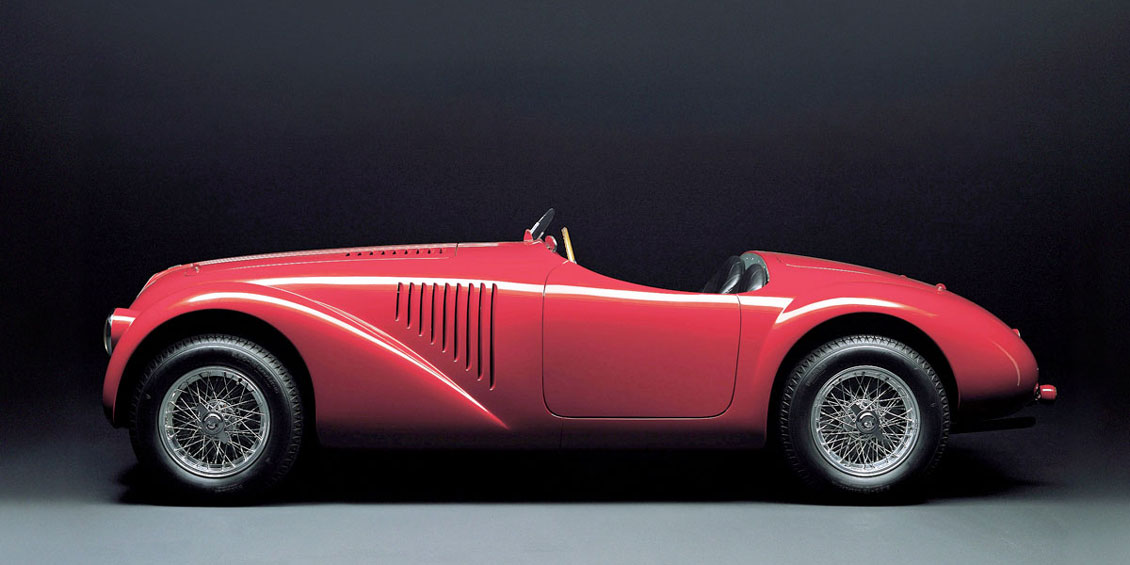CALIFORNIA - T
9th December 2014
Emulating their F1 counterparts, Ferrari’s V8 road cars are entering a brave new turbocharged world, starting with the new California T. The promise is even greater performance, and far fewer fill ups, but can the California provide the excitement its F1 sidekick failed to deliver.
Words by Chris Chilton.
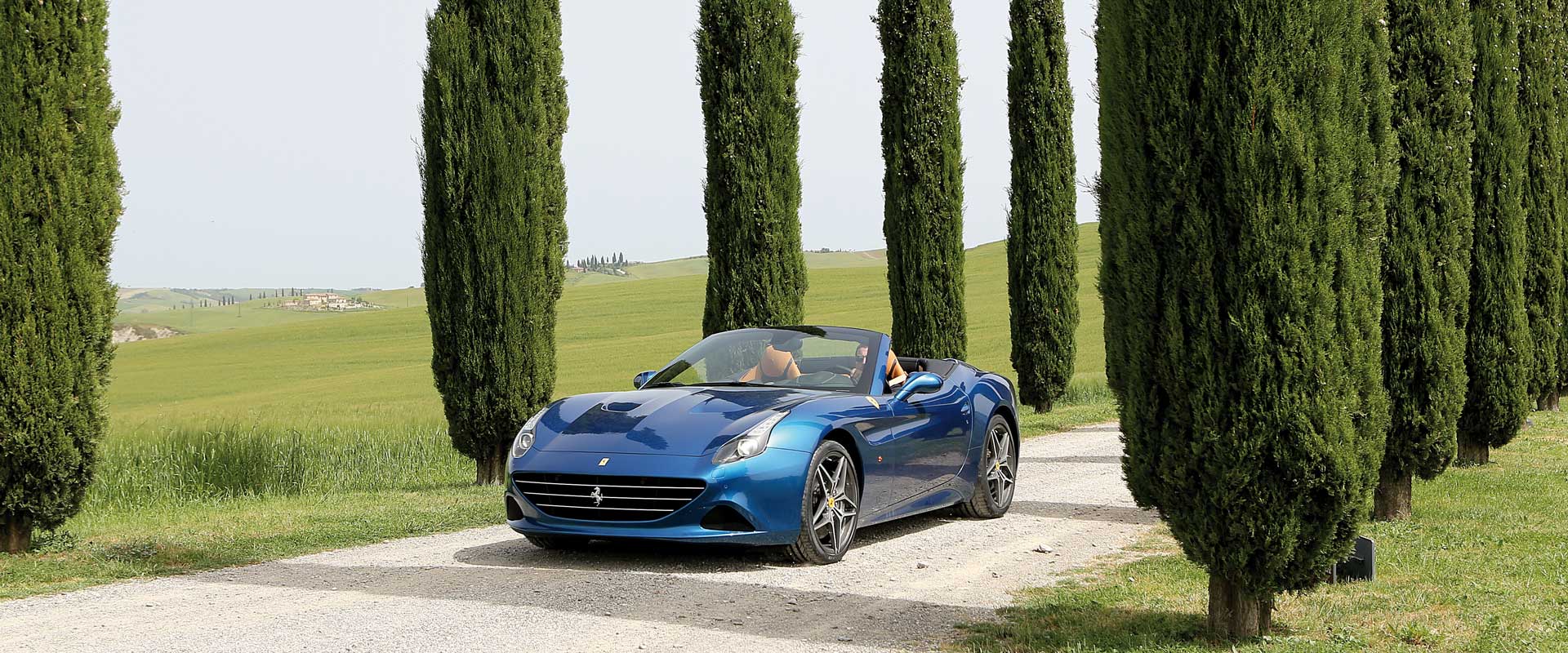
Emulating your favourite Formula One star by wearing the same wristwatch they brandish at every podium appearance is easy enough. But it’s not always simple to see the link between Grand Prix cars and their road car compatriots, even those from bluechip supercar makers like Ferrari. This year, however, F1 cars switched to turbocharged power, and so has the latest version of Ferrari’s entry-level sports car, the California T.
The last turbocharged Ferrari with number plates was the raw F40, a bewinged, kevlar-bodied bedroom poster hero that took road cars into 200mph territory for the first time, way back in 1987. Now Ferrari is revisiting the technology to help cut exhaust emissions without cutting down on performance.
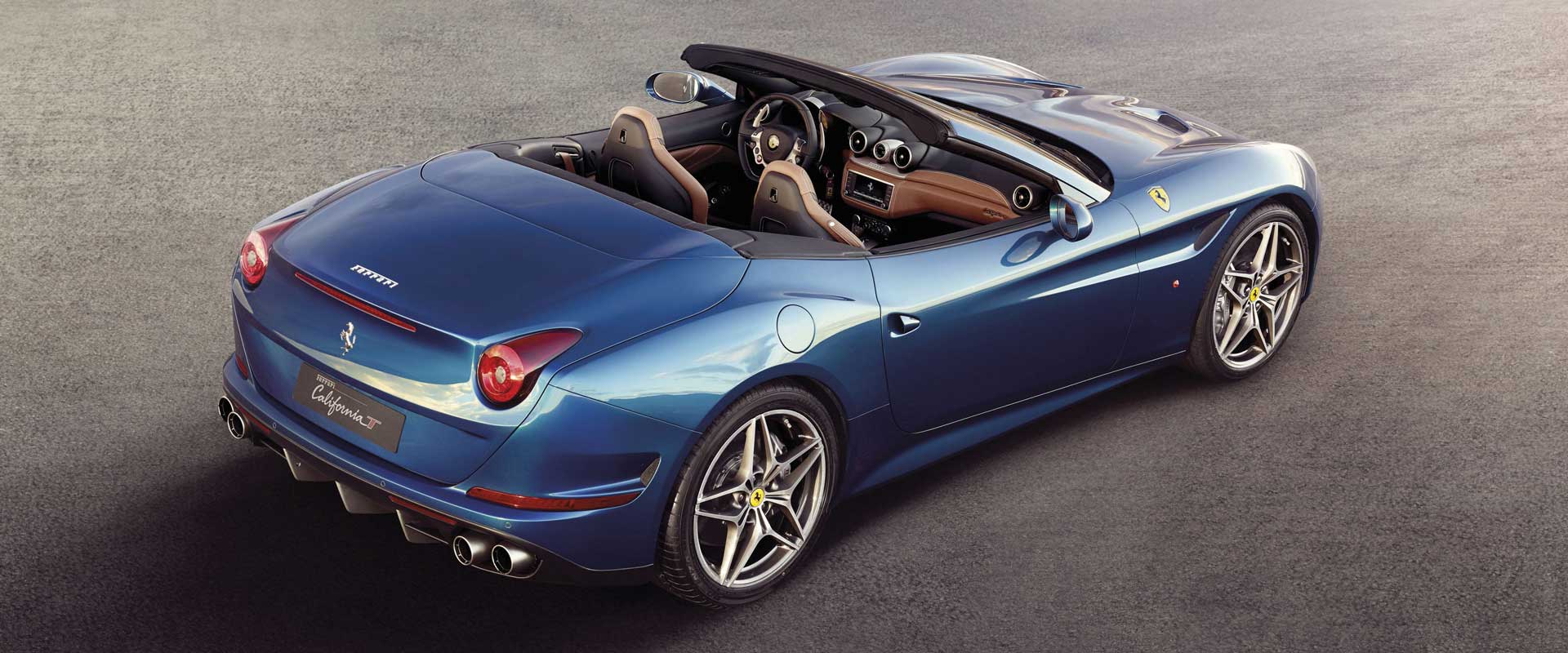
From behind the wheel, only the circular turbo boost gauge mounted between the central air vents and a bassier engine note hints that this is a substantially different California to the 2010 original. But outside, the visual transformation is nothing short of remarkable. Mindful of its remit to bring new buyers to the brand, the previous car appeared non-threatening to the point of blandness, and the bloated tail highlighted the difficulty in packaging a practical folding hardtop while still maintaining meaningful luggage space.
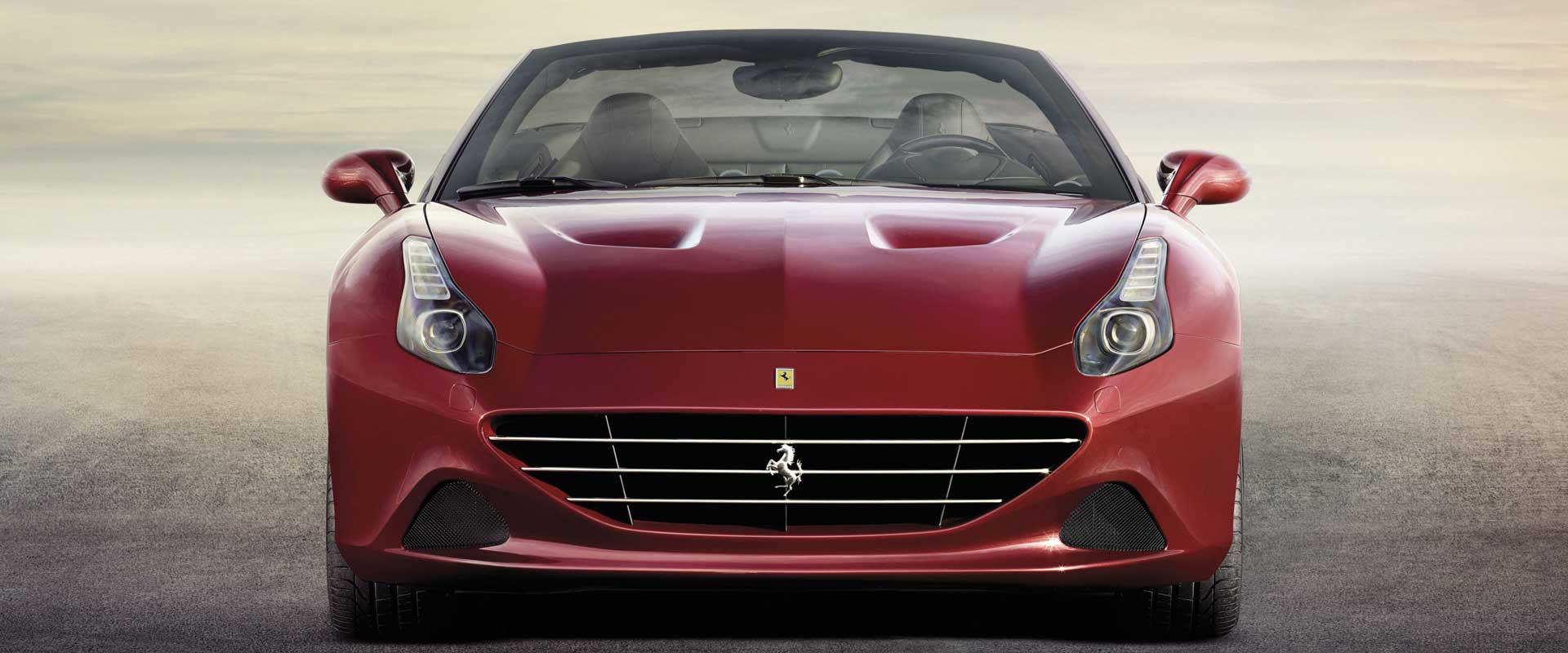
This time there’s extra tension in the aluminium skin, added drama from the longer, narrow headlamps and reshaped grille. But the most successful change is at the rear, which appears wider and lower. The result is more aggressive, more beautiful. More Ferrari.
It drives more like a Ferrari too. With its engine at the front and seven-speed dual-clutch gearbox located over the rear wheels, the old car’s fine chassis balance was never in doubt. But this time it’s backed up by significantly quicker steering and much stiffer suspension, which makes it so much more fun to thread through the kind of empty, twisting roads that make Scotland one of the few places left in the UK where you can really enjoy a car like this.
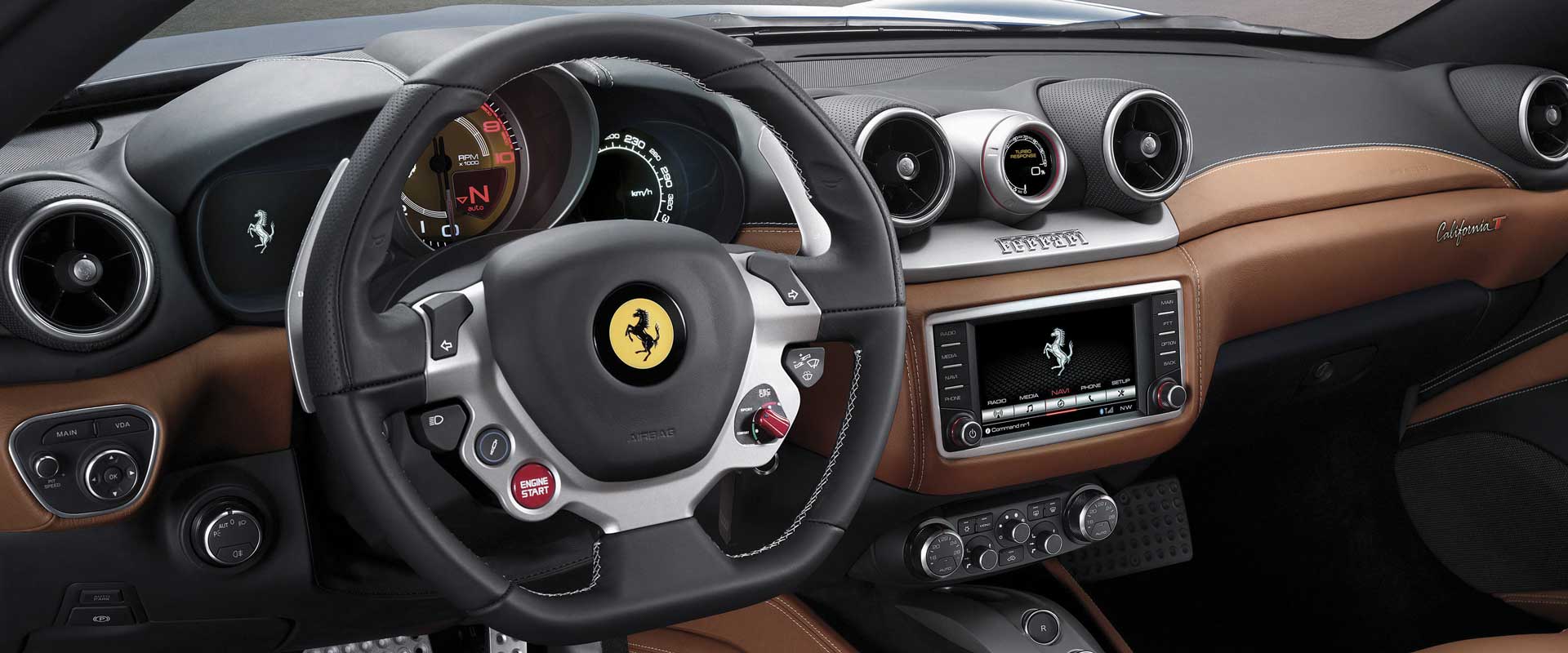
Predictably it’s the powertrain that takes centre stage. In place of the previous California’s 490bhp 4.3-litre V8, the T gets a 3.8-litre V8 good for 560bhp, dropping the 0-62mph time to a mere 3.6sec. The new engine doesn’t have the same appetite for revs, and F1 fans won’t be surprised to hear that some of the aural drama has been lost in the California’s switch to turbo power. But it feels hugely stronger in the mid range, and consequently much quicker on the road.
It’s far from the quickest Ferrari, of course, but what sets the California apart from the more glamorous, more overtly exotic mid-engined 458 is its breadth of abilities. One minute it’s a focused open-top sports car itching to eat some hairpins; a button push and 14sec later, it’s a continent-crushing GT with the security of a hard top and a boot big enough to swallow a week’s worth of luggage. Time is one of the most valuable commodities, but finding time to drive a sports car as versatile as the California T would never be a problem.
CONTINUE READING
DISCOVER THE FULL RANGE OF HUBLOT FERRARI WATCHES
The Hublot and Ferrari collaboration was natural and seamless partnership as both brands are leaders in their field with common traits of peak performance, technological leaders, and product exclusivity, just to name a few.
ULTIMATE HORSEPOWER
Ferrari’s synonymous reputation and timeless style seems unable to falter. Celebrating a historic 70 years, Ben Oliver shares how Ferrari and their Official Timekeeper Hublot plan to mark this iconic milestone.
TURN IT UP, TURBO
Faster but also more flexible than before, Ferrari’s mid-engined sports car switches from sprinter to decathlete with the addition of turbo power. Words by Chris Chilton.


